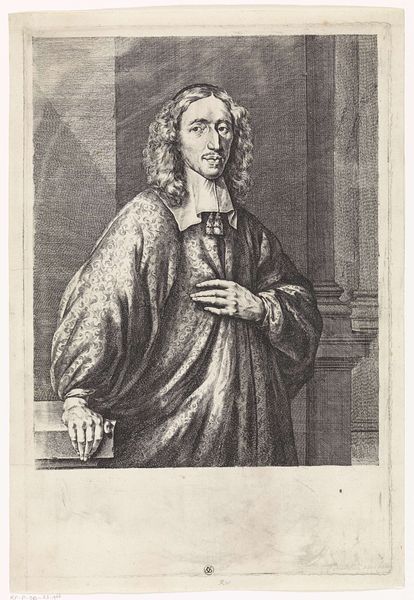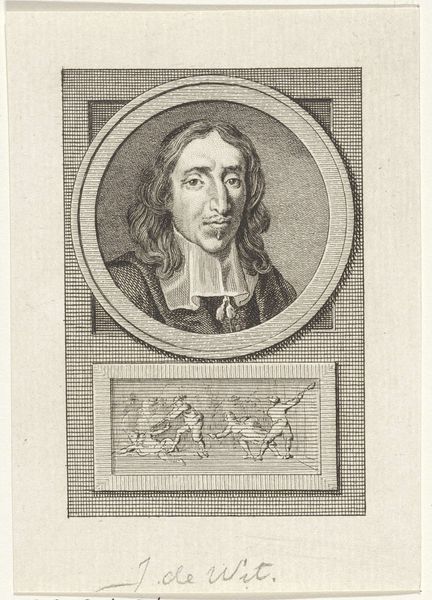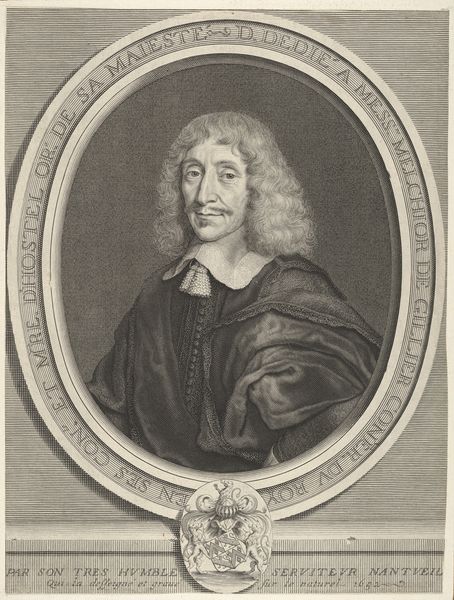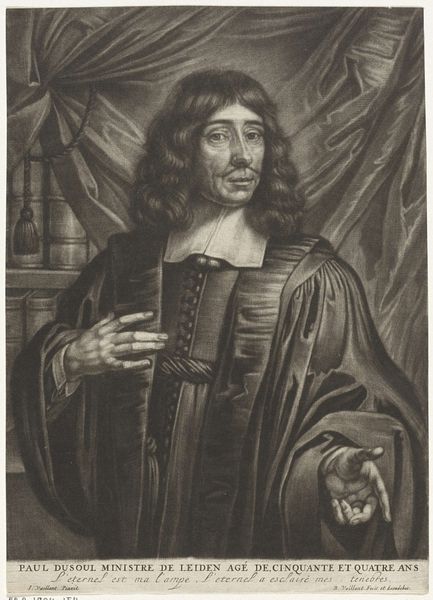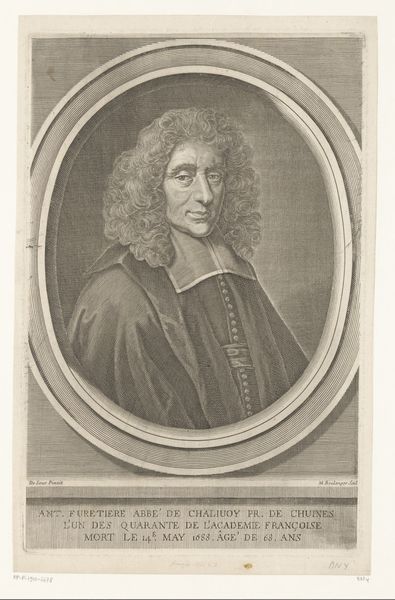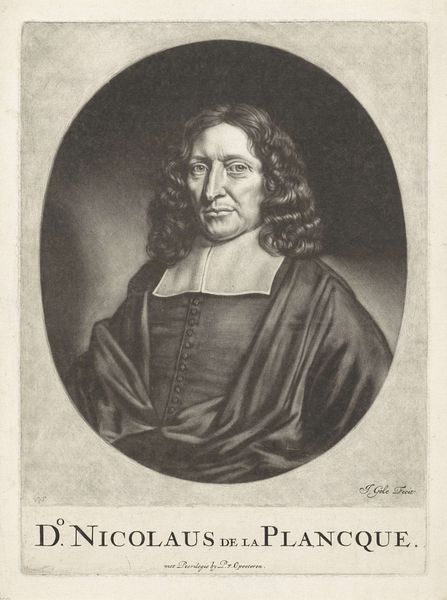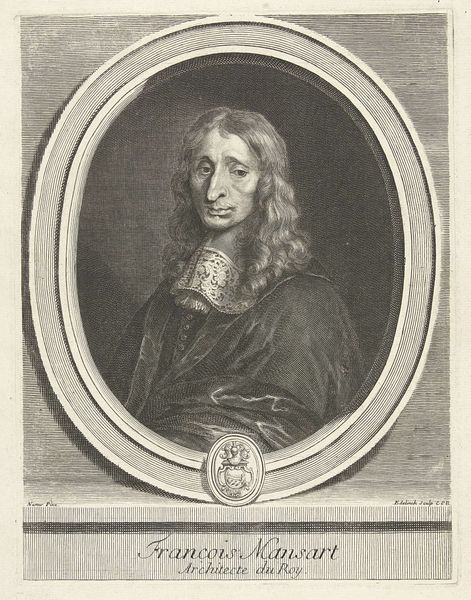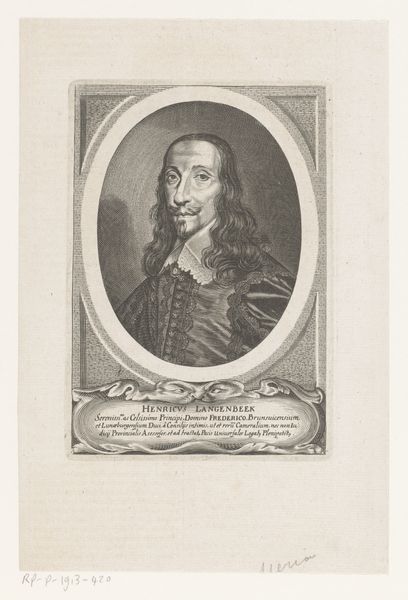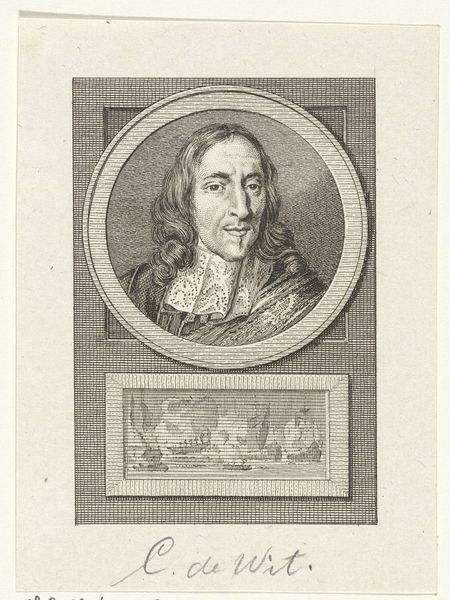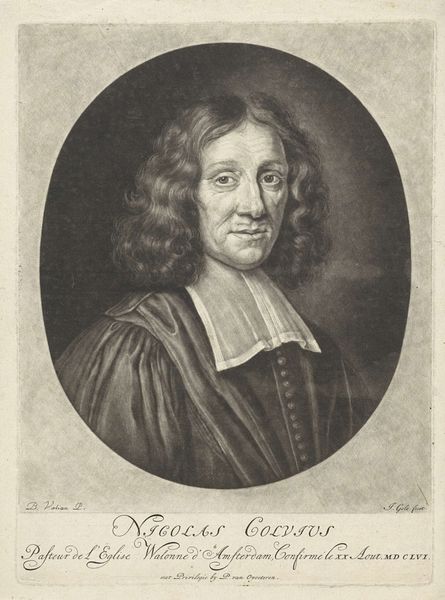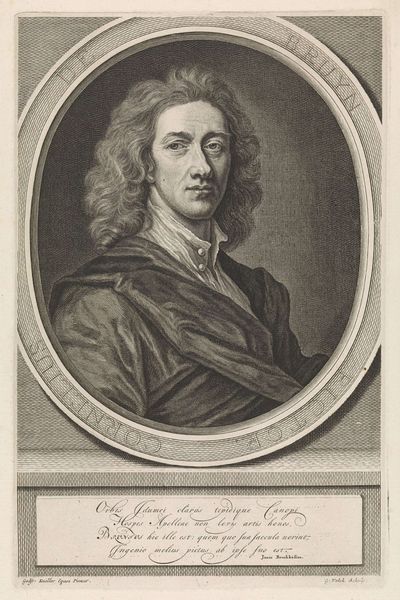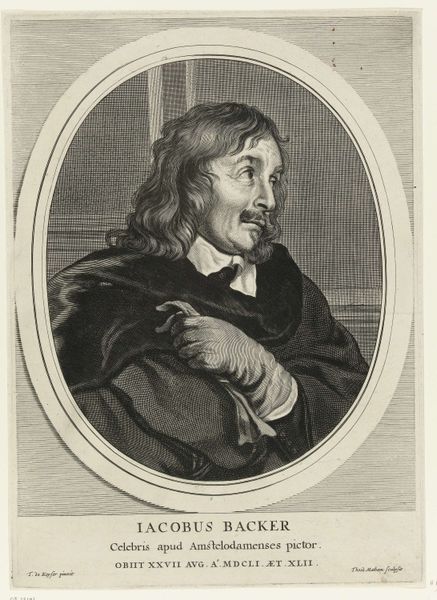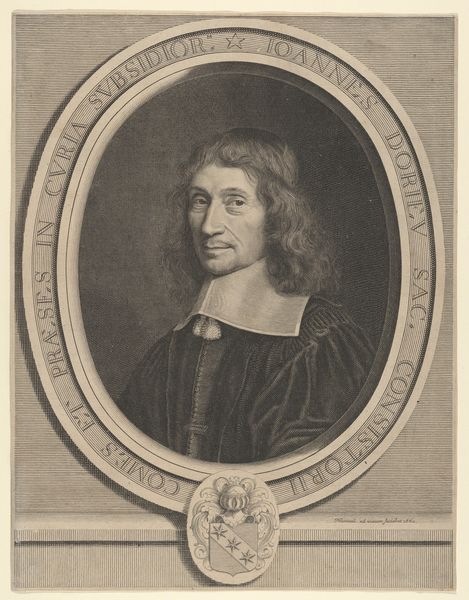
print, engraving
#
portrait
#
baroque
# print
#
engraving
Dimensions: height 252 mm, width 219 mm
Copyright: Rijks Museum: Open Domain
Curator: This engraving captures Johan de Witt, sometime between 1660 and 1700. The print provides a window into a man who shaped Dutch history. Editor: There’s an immediate sense of formality here, wouldn’t you say? The way he holds his hand, the carefully composed pose… a bit aloof, perhaps? Curator: Definitely intentional. A portrait like this wasn’t just about capturing likeness, but about constructing an image of power, reason, and authority. This aligns perfectly with De Witt's role as Grand Pensionary of Holland during the Dutch Golden Age, a period marked by intense political maneuvering. Editor: He was essentially the leader of the Dutch Republic for a time, right? And that pendant, that seems deliberately placed. Is that a symbol of office? Curator: Exactly. Consider the imagery—how the Baroque style lends an air of drama, even though it’s a rather static portrait. Everything is designed to convey gravity, emphasizing the importance of the sitter and reinforcing his social standing. The very act of commissioning a portrait speaks volumes about one’s self-perception. Editor: It feels very controlled. Engravings are such a deliberate medium, not much room for spontaneity. Did that affect how portraits like these were received at the time? Were they seen as propaganda, essentially? Curator: Certainly, images of political figures circulated widely. Each choice within this portrait had a ripple effect in conveying messages and bolstering authority. The act of widespread dissemination itself influenced perception, shaping how citizens viewed their leaders. Editor: What strikes me is the lasting power of the portrait form. Even today, centuries later, we can still access something of De Witt's persona, or at least, the persona he wanted to project. That visual language of power—the composition, the details—it still resonates. Curator: I agree. A portrait like this reveals so much about the cultural values, the intended role, and the desired memory of the subject. It offers an echo of the past—allowing us to connect with, and perhaps even understand, the individual. Editor: Looking at this engraving, I am again struck by how constructed even these relatively 'simple' portraits can be. Each element reinforces an idealized persona, not the reality of a complex, breathing human being. Curator: Exactly! This print underscores the lasting significance of symbolism in constructing images of leadership—the politics of imagery and cultural legacy continues to resonate today.
Comments
No comments
Be the first to comment and join the conversation on the ultimate creative platform.
